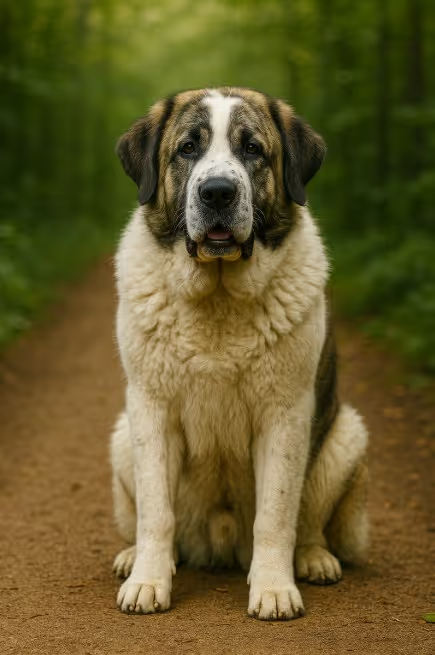The Pyrenean Mastiff (Mastín del Pirineo) is a giant, calm, and famously gentle Spanish livestock guardian bred to protect flocks during seasonal transhumance. Affectionate with family yet discerning with strangers, this steady, drool-prone cuddle–bodyguard excels in rural Canadian homes with secure acreage. If you’re wondering “Are Pyrenean Mastiffs good with kids?”—yes, in experienced homes that provide early socialization, supervision, and space.

Originating in Aragón and surrounding regions of the Spanish Pyrenees, the Pyrenean Mastiff has guarded sheep and cattle for centuries, escorting flocks between mountain summer pastures and lowland winters. Selective breeding emphasized a stable temperament, imposing size, and the hallmark dark facial mask. Modern preservation began in Spain in the 1970s, and the breed is recognized by the FCI; it remains rare in North America and distinct from the Great Pyrenees (Pyrenean Mountain Dog).
A massive, well-boned guardian with an impressive head, thick skin, and dark mask.
Surprisingly straightforward coat care, but expect seasonal snowstorms of undercoat—and some drool.
Moderate needs for a giant breed; prefers purposeful movement over sprints.
An independent thinker bred to make decisions—fair, consistent guidance is key.
Feed for slow, steady growth and joint health—especially in the first 18–24 months.
Generally robust for a giant dog, but size-related issues require vigilance.
Rare in Canada; plan ahead and verify health/temperament proofs.
Are Pyrenean Mastiffs good with children?
Yes—gentle and tolerant when well socialized; always supervise due to size.
Do Pyrenean Mastiffs drool?
Yes. Keep towels handy after water/food or excitement.
How much exercise does a Pyrenean Mastiff need?
About 45–60 minutes daily of low-impact activity and secure roaming.
Are Pyrenean Mastiffs good apartment dogs?
Generally no—their size and guardian nature suit fenced acreage.
How much does a Pyrenean Mastiff eat?
Typically 5–8 cups/day split into 2–3 meals; adjust to age, metabolism, and activity.
Pyrenean Mastiff vs. Great Pyrenees—what’s the difference?
Both are LGDs; the Mastiff is usually larger with a required dark mask and patching, and often more overtly imposing.
Do they shed a lot?
Moderately most of the year; heavily during seasonal coat blows.
How can I reduce bloat risk?
Feed multiple small meals, use slow feeders, manage stress, and restrict vigorous activity around meals; speak to your vet about prophylactic gastropexy.